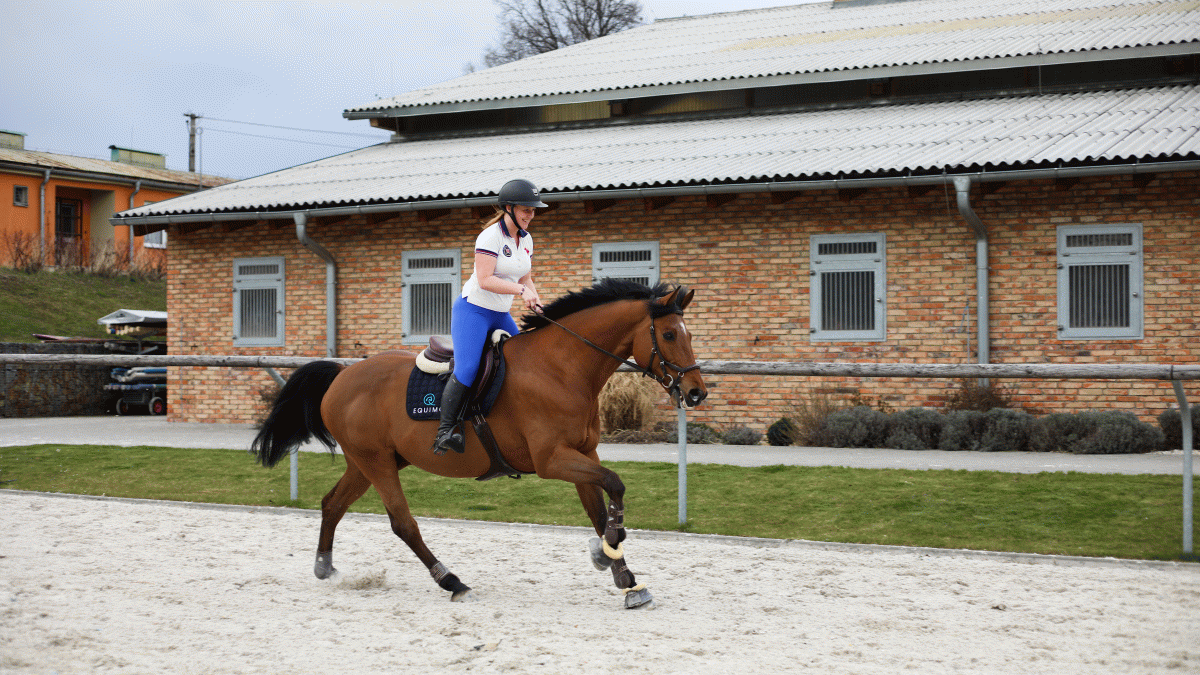
There are two terms of the equestrian world that often get mixed up: tempo and rhythm. Rhythm is the regularity of a gait, whereas tempo means the speed of a rhythm. Generally speaking, it is a movement speed, and we have already talked about its importance before. It is one of the most important values of a ride - let it be show jumping, dressage, or cross country, the right tempo is the foundation of success.
Why is the right pace so important? There are several examples at hand. A steady pace is the basis of a smooth ride, whatever your discipline may be. A proper tempo allows the horse to carry their body well – if the pace is too much, the horse may put most of their weight to the front, and contrarily a pace way too slow might cause the loss of energy and the disintegration of the rhythm – of a four-beat walk, two-beat trot, and three-beat canter. Based on the knowledge and choice of a good pace, you can determine the "right walk" that will earn you an eight from a dressage judge, and a proper pace is also a foundation of a good show jumping round as it gives a horse enough momentum to jump.
People practice the needed tempo in many ways. Riders often sing or play rhythmical songs and therefore control themselves to carry on at a good pace. While someone may use a stopwatch, jumping riders are familiar with counting "one, two… " while approaching a fence. This countdown is a correction of tempo, too, as the rider attempts to keep the same pace all the way toward a fence. EQUIMO gives the riders one more tool to their toolbox – the Equitronome function. This function determines the rhythm of a pace you choose in advance by beeping, and you may follow the beeping and translate it visually into the canter you wish to practice.
You can find the Equitronome setup in the app in each of your horses' profiles. You need two numbers for a successful setup – the required pace in meters per minute and the stride length of your horse. If you are not sure about the tempo's value, use the number 350 m/min as a springboard. It is the pace of a show jumping round, which may rise to 370 m/min in the case of big classes. Are you practicing a regular pace for a jumping competition? Work with the value 350. Do you want to teach your horse and yourself to be regular in a slower canter? Go for smaller numbers.
An average stride length is approximately 3 meters. You are the person who knows your horses the most, so you alone know if your horse has a small, regular, or big stride. If you practice the pace of higher values (a pace for a jumping class, for example), the stride's length will probably be a bit longer.
When you write down these two values, a special calculator in the app will count the "Equitronome value," which is the tempo in SPM (strides per minute). Subsequently, you choose one of the seven sounds most pleasing to your ear and press save.
You may turn on the Equitronome any time during your ride. All you have to do is open the live analysis screen in your app (the screen where you see your session's progress as you ride) and click on the Equitronome button in the upper part of the screen. The rest is up to you!